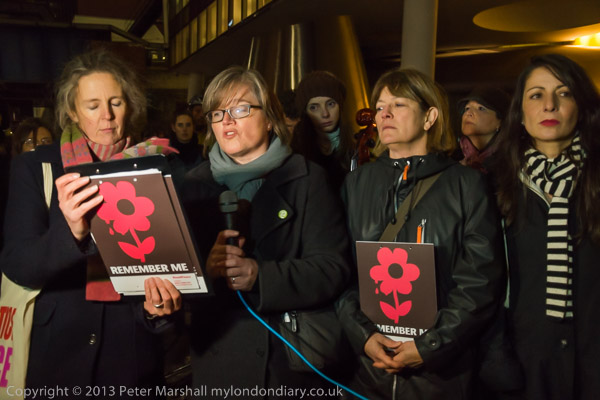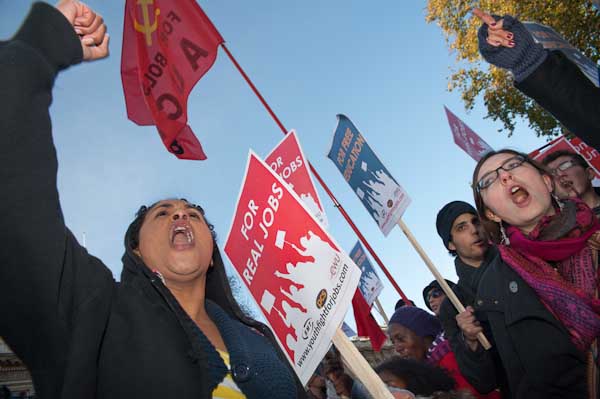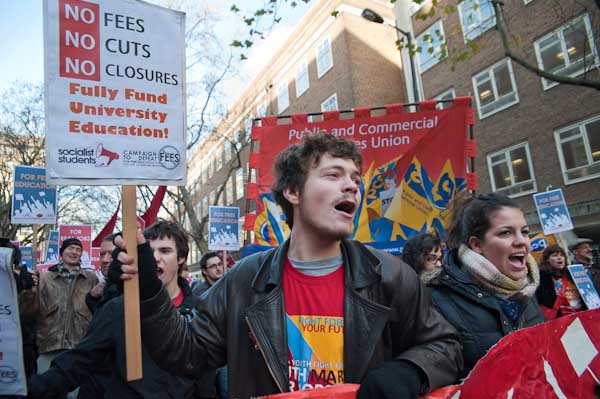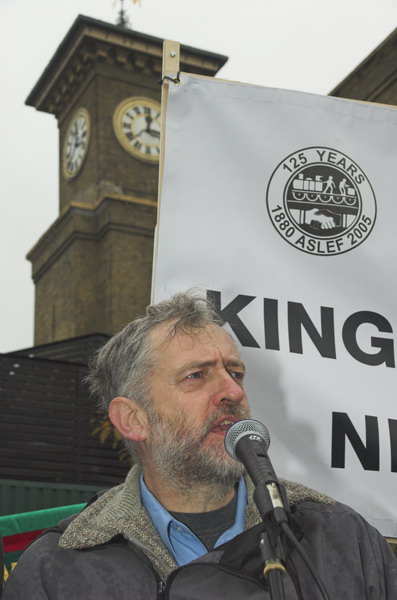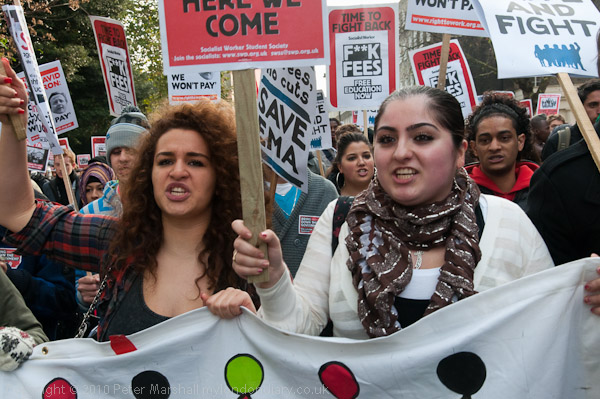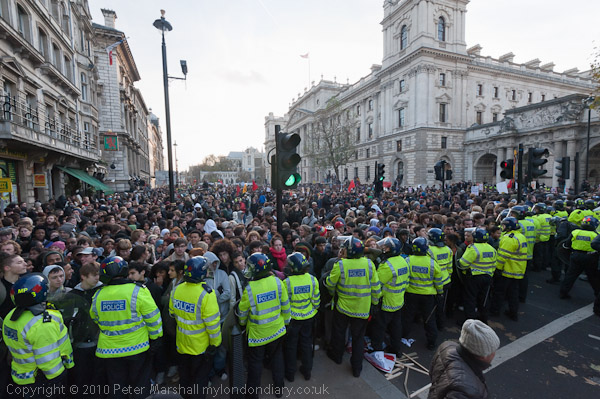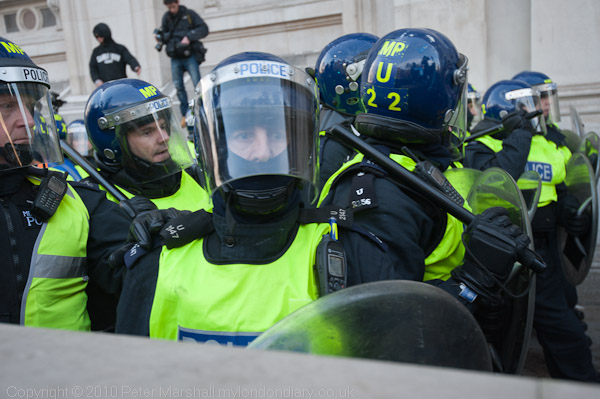Class War Protest ‘Fascist Architect’: At lunchtime on Wednesday 30th November 2016 a small group of anarchists and communists protested outside Zaha Hadid Architects in Clerkenwell against their director Patrik Schumaker.

The protest came after Schumaker had given a lecture in Berlin on the London Housing Crisis in which he had apparently said “We must destroy affordable housing and remove the unproductive from the capital to make way for my people who generate value.”
A Class War poster for the event put this quotation above pictures of Schumacher and Nazi architect Albert Speer with the question “Who said this?”.

Other posters were headed with the slogan “ARBEIT MACH FREI” much used by the Nazi party and best known for its use above the entrance of Auschwitz and other Nazi death camps and included pictures of the architect with minor variations on the quote.

Class war had also brought their banner with and image of US Anarchist Lucy Parsons (1853-1942) who voiced a rather different view on architecture, “We must devastate the avenues where the wealthy live“. Ian Bone condemned Scuumaker’s suggestion that London should become a private enclave for the ultra-rich, with the rest of us forced out.

Other groups taking part in the protest included the Revolutionary Communist Group who labelled Schumaker as an enemy of the working class and called for social housing not social cleansing’ and two people from the London Anarchist Federation had come with their banner ‘Make London the Rebel City’.

There were a number of short speeches which among other things pointed out the “class-based absurdity of his neo-conservative proposals which would produce a London which was simply a playground for the ultra-wealthy, but would socially cleanse it of all the workers essential to its running.”

Schumaker’s Berlin lecture had been greeting with boos from the audience and had been widely disowned by architects and politicians including in an open letter from Zaha Hadid Architects.
Class War had also received a letter from one of the workers at Zaha Hadid Architects, where many are said to hate their boss. The letter suggested that Class War should protest outside his £2m home close to Highbury & Islington and gave the address, but they had decided instead to protest outside the practice.

They surrounded the entrance with “CRIME SCENE – DO NOT ENTER’ tape, and both Ian Bone and Lisa McKenzie tried to get an appointment to see Patrik Schumaker without success. According to his e-mails he was away in the Far East.

After an hour of peacefully making their point the protesters left, and I went with some of them to the nearby Betsey Trotwood before leaving for home.
More pictures on My London Diary at Class War protest ‘Fascist Architect’.
Flickr – Facebook – My London Diary – Hull Photos – Lea Valley – Paris
London’s Industrial Heritage – London Photos
All photographs on this page are copyright © Peter Marshall.
Contact me to buy prints or licence to reproduce.






